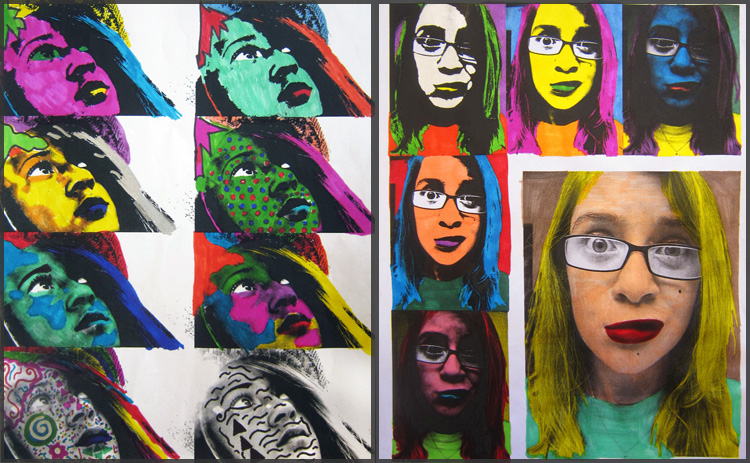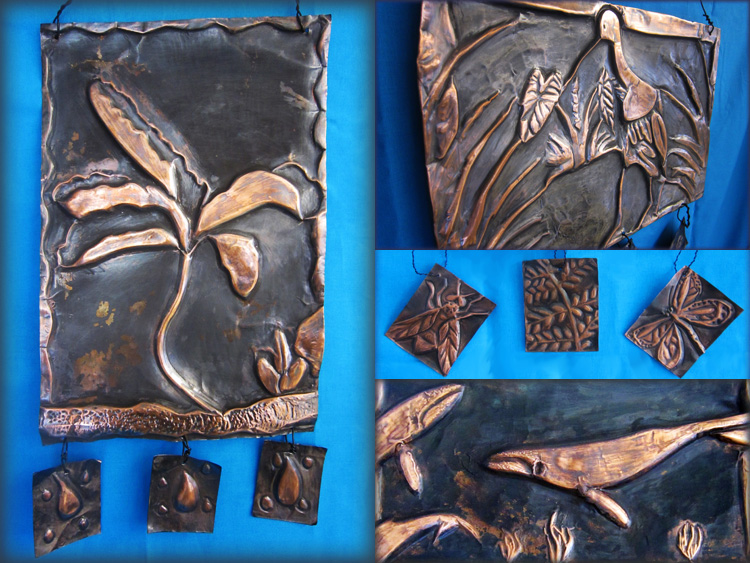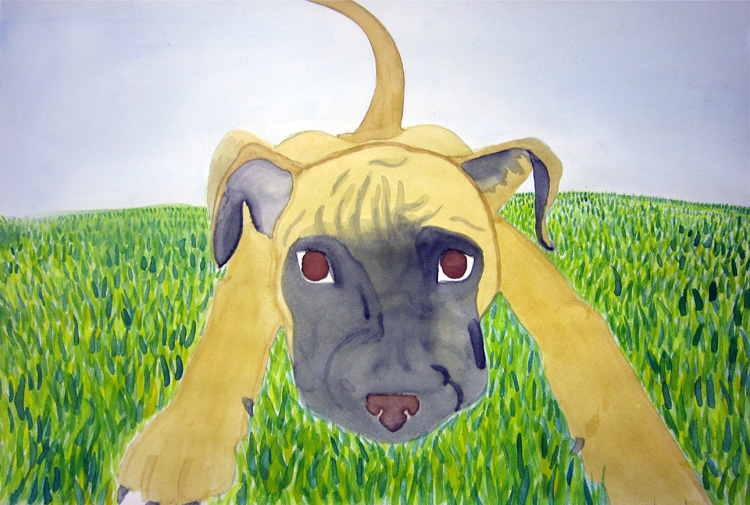Pop Art Portraits

GT Media students were introduced to the Pop Art movement that emerged in the 1950s in Britain and the United States. They were challenged to analyze, interpret, and compare works by Andy Warhol, Roy Lichtenstein, Claes Oldenburg, Jasper Johns, and other like-minded artists. The common Pop Art themes involving fashion, film stars, music, comics, and youth culture proved to be both intriguing for these middle schoolers as well as perplexing. Why would an artist print the same simple image of soup cans over and over (and why would people pay big money for them)? What is the point of building a giant sculpture of a spoon?
In addition to the verbal discussions and written critical responses that were assigned, the students also created their own “Warhol-esque” portraits using digital photography, computer manipulation, and colorful ink pens.
“An artist is somebody who produces things that people don’t need to have.” Andy Warhol




